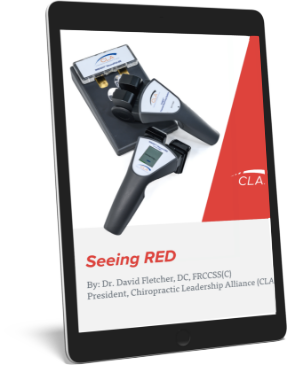by Dr. Christopher Kent
Concern is growing over declining student enrollment in chiropractic colleges. It is reported that there has been a 34% drop in student enrollment over the last six years.
A bigger problem, however, is that despite their claims to the contrary, most of the colleges are producing insurancedependent NMS practitioners.
The colleges are in trouble for two big reasons:
1. Raising admission requirements and
2. The fact that from a money standpoint, chiropractic is not very attractive to a young person who is career shopping.
In the ’80s, during the insurance boom, even a mediocre DC could make $150250,000. Today, the average income for a DC is somewhere in the $70s and $80s, depending on geography. [1] Unofficial sources estimate a failure rate of 50% of practices.
Why get a BS degree, take all those science courses, go $100,000 or more in debt, get beaten up with four parts of national boards, clinic requirements, etc. when you have a 50% chance of failure and IF you succeed, will average $80,000 or so per year after eight years of postsecondary education?
Unless you have a personal, emotional attachment to chiropractic, why become a DC? You can become a “Doctor of Pharmacy” or a “Doctor of Physical Therapy” in six years or less following high school, and be almost guaranteed employment upon graduation. [2,3] Physical therapists already enjoy direct access in most states, and a growing number offer manipulation services.
A PR campaign won’t fix any of this.
A growing number of chiropractors are supporting a four year prerequisite for admission to chiropractic college. A few states have even adopted a bachelor’s degree requirement as a matter of law. [4]
The premise seems to be that more preprofessional training equals better doctors. It is time to expose this premise as unproven.
I have been unable to locate any studies comparing DCs with two years of preprofessional study with those having four. Fortunately, there have been studies comparing medical doctors with two, three and four years of preprofessional education. These studies show that there is no significant difference in performance.
In the 1970s, because of a perceived physician shortage, several medical schools offered six year combined liberal artsmedicine programs. Lazoni and Kayne [5] reported the results of such a program. The authors described their findings: “Graduates of a sixyear combined LiberalArtsMedicine Program and their medical school classmates (traditional ‘eight year’ students) are compared as to their medical school performance and their professional postgraduate activities. On standardized examinations (Medical College Admission Test and examinations of the National Board of Medical Examiners) the sixyear group was somewhat better than the eightyear group.
“In other aspects, such as class ranking, honors at graduation, and medicine clerkship grades, the six and eightyear groups were similar. The two groups were remarkably similar in their postgraduate professional career choices and in achieving board certification.
“The data for the first three classes indicate that qualified high school students can succeed academically in an accelerated collegiatedegree program, do well in medical practice, and begin the practice of medicine at a younger age.”
These findings are corroborated by a JAMA article [6] which stated, “These data, together with additional information concerning postgraduate professional activities, indicate that the combined accelerated program has been successful.”
More recently, a group of Canadian investigators [7] reached similar conclusions: “There were no significant differences between the three groups in the results of any of the subjective and objective outcome measures. Students who have completed 2 years of undergraduate study before admission to medical school were able to achieve a satisfactory level of competency and maturity by the end of medical school. The 2year option for entrance into medical school should be reconsidered.”
Doxey and Phillips [8], in comparing entrance requirements for health care professions, wisely observed, “The value of preprofessional requirements relating to success in practice is yet to be determined.”
It is obvious that there is no evidence whatsoever that more beer, botany, and “Beowulf” make a better doctor! Those pushing for increased prerequisites should be shown what medicine has found it just doesn’t matter. The professions of pharmacy and physical therapy have redesigned their entry level degrees as first professional doctorates with a twoyear prerequisite.
Those wishing to “upgrade” chiropractic education would be wise to consider improved “real world” clinical training rather than adding more prerequisites.
References
1. Chiropractic Economics Salary and Expense Survey. http://www.chiroeco.com
2. For description of a typical 6 year Doctor of Pharmacy program visit http://www.pharmacy.purdue.edu/academics/pharmd/ … For a program that can be completed in 4 2/3 years, see http://www1.uop.edu/pharmacy/home_sop/pharmd.htm
3. Doctor of Physical Therapy degrees may be earned with 5 1/2 to 6 years of post high school instruction. For a typical program, see http://web.sau.edu/pt/admissions.htm.
4. Professional regulation in the United States. Federation of Chiropractic Licensing Boards brochure. 1996.
5. Lanzoni V, Kayne HL: “A report on graduates of the Boston University sixyear combined liberalartsmedicine program.” J Med Educ 1976;51(4):283.
6. Blaustein EH, Kayne HL: “The accelerated medical program and the liberal arts at Boston University.” JAMA 1976;235(24):2618.
7. Crockford PM, Gupta DM, Grace MG: “Requirements for admission to medical school: how many years of university study are necessary?” Can Med Assoc J 1995;153(11):1595.
8. Doxey THE, Phillips RB: “Comparison of entrance requirements for health care professions.” JMPT 1997;20(2):86.

























































































































































